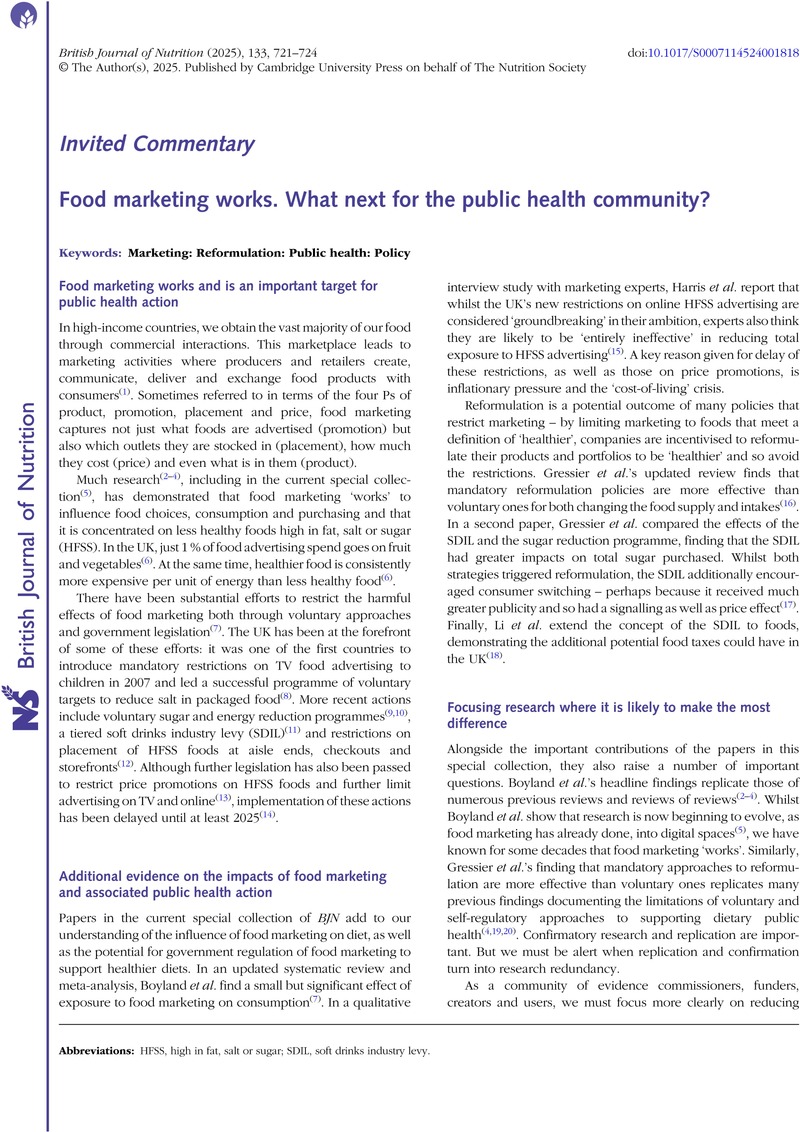Department of Health and Social Care (
2022) Press release: Government delays restrictions on multibuy deals and advertising on TV and online.
https://www.gov.uk/government/news/government-delays-restrictions-on-multibuy-deals-and-advertising-on-tv-and-online (accessed August 2022).
Google Scholar 